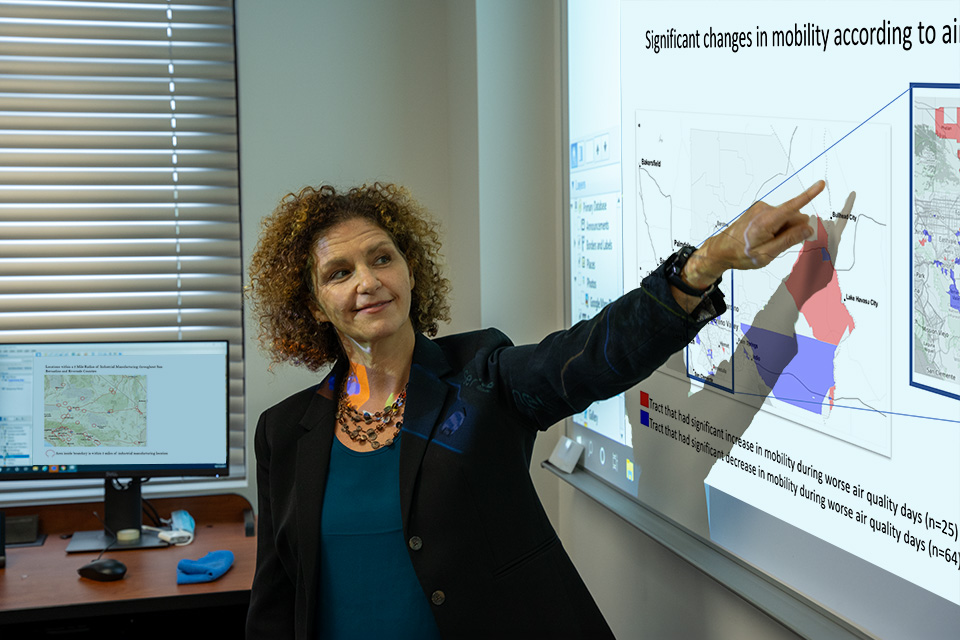Recent research from Enbal Shacham, Ph.D., M.Ed., associate dean for research in the College for Public Health and Social Justice at Saint Louis University, sheds new light on air quality, pediatric asthma and public health interventions.
Throughout her career, Enbal Shacham, Ph.D., M.Ed., associate dean for research in the College for Public Health and Social Justice, has worked on the critical intersection of health and geospatial science. She has conducted research to predict the spread of some of the world’s most infectious diseases, including COVID-19, HPV, Zika Virus, and HIV/AIDS. Her latest research tells a similar story, yet it is specifically tied to a common childhood ailment — asthma.
Pediatric asthma is one of the most prominent chronic health issues among U.S. children, with daily management being particularly challenging in areas with higher rates of public housing and poor air quality. Shacham and her team conducted a study in partnership with the Inland Empire Health Plan (IEHP) to examine the geographic factors of air quality and how the factors relate to pediatric asthma management. She focused their efforts on a group of children receiving Medicaid services in two counties of Southern California, where increased rates of air pollutants like ozone, carbon monoxide, nitrogen dioxide and sulfur dioxide tend to exist in low-income communities.
Shacham explained that studying air quality and its impact on diverse health conditions helps researchers identify where and how to change health outcomes on a much larger scale.
“Air quality has an impact on many different health conditions; we studied asthma as it is one chronic condition that can be sensitive to exacerbations like asthma attacks,” she said.
“Our health plan collaborators needed help prioritizing housing-remediation services for their members, and this study was able to give actionable results and likely change health outcomes,” Shacham said.
Developing the best plans requires understanding how asthma rates in children relate to the environment in which they live, using location data. Shacham and her team collected health membership data and asthma encounters between 2019 and 2021, public housing location data, air quality assessments, and air pollution exposure rates. The use of location data coupled with the air quality assessments visually showcased air quality’s effect on those with pediatric asthma within a specific location.
With the study's results in hand, Shacham hopes this information will help pinpoint intervention opportunities that will benefit the health of children and all those living in areas plagued by lower air quality.
“My hope is that we conduct more research and promote policy interventions to address these inequities in air quality as they impact a diverse range of health conditions,” she said. “Reducing air pollutants would help manage these conditions and would reduce morbidity and mortality of particularly vulnerable communities across the world.”
Story by Mary Pogue, senior copywriter, Paradigm.
This piece was written for the 2023 SLU Research Institute Annual Impact Report. The Impact Report is printed each spring to celebrate the successes of our researchers from the previous year and share the story of SLU's rise as a preeminent Jesuit research university. Design, photography, and some writing contributions are made by Paradigm. Find the Impact Report here.

